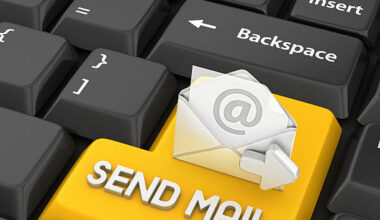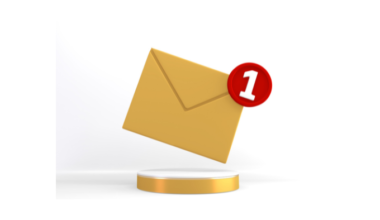Ever found yourself waiting for an email reply and feeling a bit frustrated? We’ve all been there, and it’s never fun. Now, imagine you’re on the other side and you’re the one who kept someone waiting.
How do you say “sorry” without sounding repetitive or insincere? That’s exactly what we’re elaborating on today. Why might you want to find different ways to say this? Well, using the same phrase repeatedly can come off as robotic or insincere.
Plus, different situations call for different tones. Sometimes, you need to be more formal; other times, a friendly touch is better. That’s where a bit of variety can help.
In this article, we’ll explore seven ways to say sorry to keep you waiting in an email, backed by advice from email etiquette experts. We’ll also discuss why and when to use these alternatives, so you can keep your professional communication effective and engaging. Join me in this journey!

The Importance of Timely Response
Responding to emails promptly isn’t just about being polite; it’s about showing respect for the other person’s time and maintaining a professional image. When you delay, it can lead to Think about the impact of delays. Imagine you’re waiting for a crucial update.
The longer you wait, the more anxious you become. You might start to question whether the person values your time or if they’re even going to respond at all. This uncertainty can be frustrating and stressful.
Now, put yourself in the shoes of the person waiting for your reply. They could be a client waiting for important information about a project, a colleague needing your input to move forward, or a friend awaiting your response to a personal matter.
Delays in these scenarios can cause a ripple effect, slowing down projects, hindering decision-making, and potentially damaging relationships.
- Professionalism and reliability. Timely responses convey professionalism and reliability. They show that you are organized, attentive, and respectful of others’ time. This is especially important in a business setting, where your reputation can greatly influence your success.
- Consistently responding promptly can build trust and credibility, making people more likely to rely on you and seek your input.
- Building and maintaining relationships. Effective communication is key to building and maintaining strong relationships. Whether it’s with clients, colleagues, or friends, how you communicate can significantly impact your relationships.
Prompt responses show that you care about the other person’s needs and value their time, which can strengthen your connections.
- Avoiding misunderstandings. Delays in communication can also lead to misunderstandings. When there is a lag between emails, important details might be forgotten or misinterpreted.
Quick responses help ensure that conversations remain clear and that any questions or issues are addressed promptly, reducing the risk of confusion.
- Enhancing productivity. In the workplace, timely email responses can enhance productivity. When emails are answered promptly, tasks can be completed more efficiently, projects can move forward smoothly, and teams can collaborate more effectively.
On the other hand, delayed responses can create bottlenecks, slowing down progress and causing frustration.
- Setting expectations. By responding promptly, you set a standard for communication within your team or organization.
It encourages others to also prioritize timely communication, creating a culture of responsiveness and respect. This can lead to overall improvements in communication and efficiency within your group.
- Mitigating stress and anxiety. Waiting for a response can be stressful. Timely replies help to mitigate this stress, providing reassurance and clarity.
When people know they can rely on you for prompt communication, it reduces anxiety and fosters a more positive and trusting relationship.
- Reflecting on accountability. Timely responses also reflect accountability. They show that you take your commitments seriously and are reliable.
This is especially important in professional settings, where accountability is key to maintaining trust and credibility.
- Improving overall communication. Prompt responses contribute to smoother and more effective communication overall. They keep the flow of information continuous and reduce the chances of losing track of important details or conversations.
This can be especially beneficial in complex projects where clear and consistent communication is crucial.
- Adapting to technological expectations. In today’s digital age, people expect faster communication due to the instantaneous nature of technology.
Meeting these expectations by responding promptly can help you stay competitive and relevant, whether in business or personal communications.
By making an effort to respond to emails promptly, you can improve your communication skills and contribute to a more effective and harmonious working environment.

7 Alternative Phrases to “Sorry to Keep You Waiting”
Alright, here we go—the heart of our article. Here are seven phrases you can use instead of the standard “Sorry to keep you waiting.”
Alternative 1: “Thank you for your patience.”
This phrase shifts the focus from the delay to the recipient’s understanding. It’s positive and shows appreciation.
Example: “Thank you for your patience. Here’s the information you requested.”
Alternative 2: “I appreciate your understanding.”
Similar to the first, this phrase acknowledges the recipient’s tolerance. It’s great for situations where the delay is unavoidable. Example: “I appreciate your understanding regarding the delay. Let’s move forward with…”
Alternative 3: “Thank you for waiting.”
This is a straightforward way to acknowledge the wait without over-apologizing. It’s simple and effective. Example: “Thank you for waiting. I’ve attached the documents you need.”
Alternative 4: “I apologize for the delay.”
Sometimes, a direct apology is best. This phrase is clear and to the point, ideal for more formal communications.
Example: “I apologize for the delay in my response. Here’s what we discussed.”
Alternative 5: “I’m sorry for the inconvenience.”
This phrase works well when the delay might have caused some trouble or inconvenience. Example: “I’m sorry for the inconvenience caused by the delay. Let’s address…”
Alternative 6: “Thank you for your patience and understanding.”
Combining gratitude with acknowledgment can be very effective. It’s warm and appreciative. Example: “Thank you for your patience and understanding during this busy period.”
Alternative 7: “I appreciate your patience in this matter.”
This phrase is particularly useful for ongoing communications or projects. It shows you value their patience specifically regarding the current situation. Example: “I appreciate your patience in this matter. Here’s an update on…”
When to Apologize in an Email
So, when should you apologize for a delayed response? It’s not always black and white. If you’re a day late replying to a casual email, it might not be a big deal. But if it’s a time-sensitive matter, a quick apology is definitely in order.
Consider the context: Is it a professional or personal email? How urgent is the matter at hand?
For instance, if you’re responding to a client’s query about a project deadline, a delay could have significant implications. In such cases, acknowledging the delay and apologizing is essential to maintain trust and professionalism.
Balancing authenticity and professionalism is key. You want your apology to feel genuine, not just a formality. Think about the situation and the relationship you have with the person.
A heartfelt apology can go a long way in maintaining trust and respect. For example, if you’re emailing a long-term colleague, a casual “Thanks for waiting, appreciate your patience!” might suffice.
However, for a new client, a more formal “I apologize for the delay in my response. Thank you for your patience” would be more appropriate.
The Drawbacks of Over-Apologizing
Believe it or not, over-apologizing can sometimes do more harm than good. If you’re constantly saying “sorry,” it can make you seem less confident and even undermine your authority.
It can give the impression that you’re often in the wrong or not in control of your workload, which isn’t great for your professional image.
Think about it: if you apologize for every little thing, your genuine apologies might lose their impact. Plus, it can set a tone that you’re always at fault, which isn’t great for your professional image.
For example, if you apologize multiple times within a single email or repeatedly for minor issues, it can dilute the sincerity of your apology when it really matters.
Instead, aim for a balance. Apologize when it’s truly warranted, and use other phrases to acknowledge delays without overdoing it.
For instance, instead of saying “Sorry for the delay” multiple times, you could say “Thank you for your patience” or “I appreciate your understanding.” This approach acknowledges the delay without undermining your confidence or authority.
Expert Tips on Crafting Effective Apologies
Now, let’s get some advice from the pros. Email etiquette experts suggest that a good apology should be sincere, concise, and to the point. Here’s how to craft an effective apology that doesn’t sound repetitive or insincere:
- Acknowledge the Delay: Start by recognizing the delay. This shows that you are aware of the inconvenience caused. For example, “I apologize for the delay in responding.”
- Brief Explanation (if necessary): If appropriate, briefly explain the reason for the delay. However, avoid making excuses. A simple, honest explanation can sometimes help. For instance, “I’ve been handling multiple projects this week.”
- Express Appreciation: Show gratitude for their patience and understanding. This can soften the impact of the delay and convey respect. For example, “Thank you for your patience during this busy time.”
- Move On to the Main Content: Transition smoothly to the main content of your email. This keeps the focus on the message rather than the delay. For instance, “Here is the information you requested…”
By following these steps, you can ensure your apology feels genuine and professional, maintaining a positive tone in your communication.
Contextualizing Apologies
Not every apology fits every situation. Tailoring your response to the context and the recipient can make a big difference.
For instance, a casual email to a colleague might need a different tone than a formal email to a client.
Think about who you’re writing to and what the situation is. Adjust your language accordingly to keep the communication smooth and professional. Here are a few examples:
- Client Communication: For clients, a formal tone is usually best. Acknowledge the delay, briefly explain if necessary, and express appreciation. For example, “I apologize for the delay in my response. Thank you for your understanding. Here is the update you requested…”
- Internal Communication: When emailing colleagues or team members, a more casual tone can be appropriate. You might say, “Thanks for waiting! Here’s the info you needed.”
- Ongoing Projects: If the email is part of an ongoing project, it’s important to acknowledge the delay and reassure the recipient about the next steps. For instance, “I appreciate your patience in this matter. Here’s where we stand with the project…”
- Different Cultures: Be mindful of cultural differences in communication styles. In some cultures, formal apologies are highly valued, while in others, a more casual approach might be appreciated. Adjust your tone accordingly to show respect and understanding.
By considering the context and the relationship with the recipient, you can tailor your apologies to be more effective and appropriate.

Practical Tips for Avoiding Delays
Of course, the best way to handle delayed responses is to avoid them in the first place. Here are some practical tips to help you stay on top of your emails:
- Set Specific Times for Emails: Allocate specific times during your day to check and respond to emails. This prevents emails from piling up and ensures timely responses. For example, you might check your inbox first thing in the morning, after lunch, and before the end of the workday.
- Use Email Filters and Folders: Organize your inbox with filters and folders. This helps prioritize important emails and keeps your inbox manageable. For instance, create folders for different projects, clients, or priority levels.
- Set Up Autoresponders: If you know you’ll be unavailable for a while, set up an autoresponder to manage expectations. This way, people are informed about your availability and know when to expect a response. A simple message like “I am currently out of the office and will respond to your email on [date]” can be very effective.
- Prioritize Responses: Tackle urgent emails first. Use the “Two-Minute Rule” – if an email will take less than two minutes to respond to, do it immediately. This helps keep your inbox clear and ensures important emails are addressed promptly.
- Delegate When Necessary: If you’re overwhelmed with emails, consider delegating responses to a team member or assistant. This ensures timely communication without overburdening yourself.
- Keep Emails Short and to the Point: Long emails can be daunting and lead to procrastination. Aim to keep your responses concise and focused on the main points.
By implementing these strategies, you can manage your email communication more effectively, reducing the likelihood of delays and ensuring that your responses are timely and professional.
Bottom Line
Timely responses are crucial in maintaining professionalism and good relationships. By using alternative phrases, you can keep your communication fresh and sincere. Remember, it’s all about balance—apologize when necessary, but don’t overdo it.
Mastering email etiquette isn’t just about saying the right things; it’s about building trust and showing respect. So next time you’re drafting an email, keep these tips in mind and communicate with confidence.
Happy emailing!







